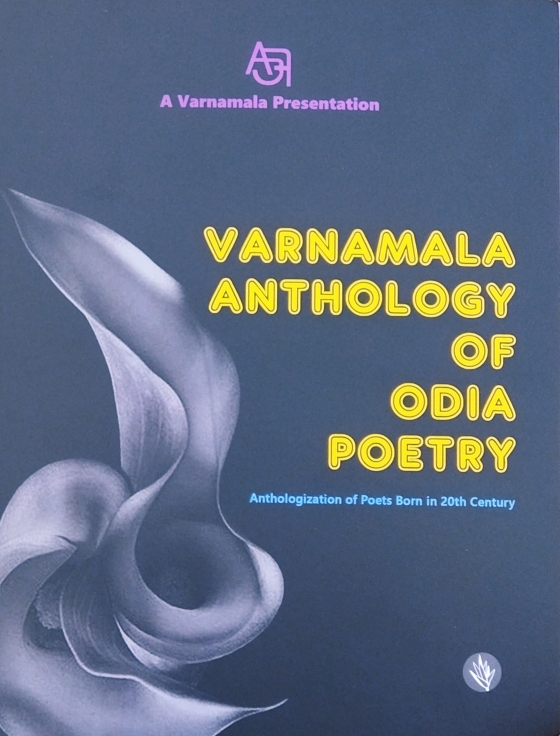Bhaskar Parichha

Is there anything magical about the number 300? If not for anything else, three hundred is certainly a generous figure for any collection of poetry, as this collection does. Ordinarily, there is no standard for how many poems should be included in an anthology, and there are no set rules for it either. For editors, it is much more significant that the collection feels “kaput”. Langston Hughes is a titanic figure in 20th-century American literature and a powerful interpreter of the American experience. A collection of poems by Hughes contains a total of 868 poems!
‘Varnamala Anthology of Odia Poetry’ by Ketaki Foundation is the first of its kind to bring together on a single platform, poems of several generations. There are no blemishes in the reckoning: 1901 to 2000.
The anthology has a whole host of editors. Noted poet Rajendra Kishore Panda is the chief editor of this compendium and Rabindra K Swain is the editor. Others who are on the panel include poets Surya Mishra, Kedar Mishra and Suryasnata Tripathy.
The blurb on the back of the book reads: “Varnamala Anthology of Odia Poetry is a historic publication. Never before has such an anthology of poetry comprising poetry of more than 300 Odia poets been published. Odia, an Indian language of National ‘classical’ status, is one of the ancient and most developed Indian languages, with a rich legacy of literary creativity since the fifth-to-eighth century AD. The genre of poetry has always been the central focus of literary creativity in Odia.’
In the introduction to the book, Rajendra Kishore Panda writes: ’We reiterate the limitless omnipresence of good poetry, but here we present an anthology of selected works of Odia poets of the Neomodern phase, ushered in by Satchidananda Routroy and other major poets, and further developed by poets of succeeding generations.’ What follows in the introduction is a brief survey of Odia literature and the age division.
The anthology begins with Kuntala Kumari Sabat (1891 AD) and ends with Sanghamitra Bhutia (2000 AD). It is designed to be a collection of poems written by poets born in the twentieth century, which makes editing the volume a lot easier.
If twentieth century world poetry has a diverse range of themes – realism,love, pessimism, romantic elements, nature, humanitarian and democratic values, religion and mysticism, Odia poetry too had these fundamentals. The first two decades of the twentieth century saw the emergence of a group of poets whose chief concern was patriotism. Gopabandhu Das (1877-1928), one of the founders of the modern Odisha state, was the leader of this group, which was known as the Satyabadi Group. It was followed by another group, called Sabuja (the Greens) who wrote under the influence of Western and Bengali literature. The Sabuja poets introduced original themes and forms, and their work was youthful.
But this anthology delineates the beginning of modern Odia poetry rather in this fashion: ‘While Radhanath Ray (1848-1908) is the principal architect of the era of initial modernity in Odia poetry, Satchidananda Rautroy (1916-2004) is reckoned as the harbinger of the era of “neo-modernity” in Odia poetry; he is the “principal idiom-maker of modern Odia poetry. He has a wide range and a world-view. His phenomenal presence is acknowledged by major poets younger than him, who have had their own zones for a long time.”
The editorial note briefly touches upon the evolution and growth of Odia poetry in the past one hundred years. It also discusses the major voices that have contributed to the development of poetry. Even so, it acknowledges that predicting the course of streams and substreams is premature.
The cover art by Jyotiranjan Swain is evocative. The gorgeously-produced anthology has tried to be as comprehensive as possible with the editor acknowledging that many deserving poets may have been left out in the process of selection. By putting the poets in a decadal perspective, the anthology fulfills its intended purpose.
Though poets are often influenced by each other and sometimes share a common outlook, their style and ways of writing differ from each other. That inevitability is clearly evident in the present anthology. An exemplary aspect of this omnibus that stands out is the fact that many highly respected writers of poetry have taken on the task of translating the original poems of young poets – some of whom are much younger.
Varnamala is a non-profit charitable literary and cultural trust based in Bhubaneswar while the Ketaki foundation is dedicated to the art, literature and culture of Odisha. In unison, they have done a brilliant job of presenting modern Odia poetry and who is who in that field.
Varnamala Anthology of Odia Poetry
Chief Editor: Rajendra Kishore Panda
Ketaki Foundation
Bhubaneswar
264 pages
Rs 850






















